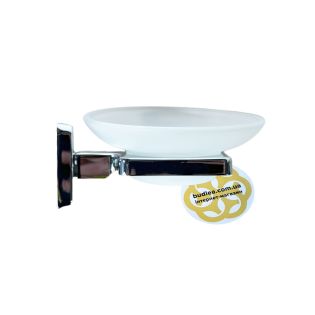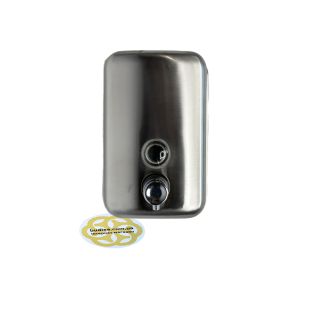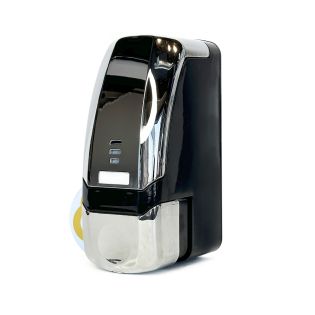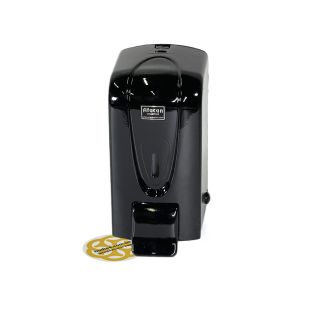How does a liquid soap dispenser work?
Now there are many people who consider the soap dish to be archaism, and dangerous, and the corresponding opinion really does not make sense. The explanation is simple. Firstly, the soap dish is a breeding ground for the reproduction of pathogenic microflora, and secondly, it is not particularly convenient to use it.
The solution to the problem is the successor of the soap dish – a dispenser for liquid soap. Such a modern dispenser combines hygiene and ergonomics, and it is inexpensive and serves for a long time. You can read more about the functionality of dispensaries for soap of different types and about the features of choosing these devices in the article.
Types and principle of operation of dispensers
The specifics of the soap depends on its device and design. Now on sale you can find mechanical dispensers, a separate subspecies of which are elbow accessories and touch devices.
Each of these categories has its pros and cons.
Mechanical soap dispensers, actuated by pressing a special small lever or button, have become popular, as they have a number of advantages:
- ease of use – it is easy to use such devices
- attractive, low cost – the mechanical option is the most budget-friendly
- nice design – dispensers look elegant, fit well into different interiors
- versatility – such devices can be seen everywhere, including in bathrooms, retail premises and public toilets.
The disadvantage of dispensers, the mechanism of which is activated manually, is the need for physical contact with the structure. In terms of hygiene, this is not ideal, especially in places with high traffic, where people infected with dangerous viruses may be.
The sensor type of dispensers is a serious competitor to analog mechanics. The use of such devices does not involve physical touching for them.
To activate the appropriate dispenser and get a dose of detergent from it, you just need to put your palm under the dispensing hole. In this case, the infrared sensor of the gadget is triggered – and the user receives a portion of soap without touching the device.
Touch dispensers have their own advantages:
- hygiene, safety of use – automatic delivery of soapy liquid is made contactless
- stylish look – such a "miracle of technology" is not in vain that prestigious and respectable establishments are chosen
- the cost corresponds to the quality – although sensor dispensers are more expensive than mechanical ones, their price justifies itself
- such products are the best solution for medical institutions, laboratories and other premises whose profile does not exclude the risk of infections.
Elbow soap dispensers are also activated by pressing a lever, but this element is pressed not with a brush, but with an elbow. In this case, a person also comes into contact with the device, but touches it mainly with a non-open area of the skin, and this is safer from the point of view of hygiene.
Elbow-type dispensers are installed most often in crowded public places.
How to choose the right soap dispenser
Choosing the appropriate dispenser requires taking into account a number of factors:
- the type and principle of operation of the device – information about the differences and classification of these accessories is given above
- places where the dispenser is installed – a mechanical model is quite suitable for a home, and it is better to purchase a touch option for a hospital
- the number of potential users – for areas with high traffic, it is desirable to purchase devices with infrared sensors
- the design of the product – it should be in harmony with the surrounding interior
- material – plastic and metal models can be found on sale (metal makes the product look presentable, but it is more difficult to take care of it).
The material also affects the price tag and the service life of the corresponding accessories – dispensers made of polymers do not last so long, but they are cheaper than metal ones, so they are not difficult to replace.
Additional products
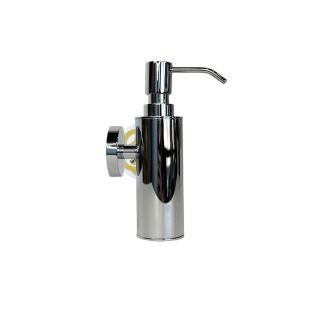 Liquid soap dispenser Tonda 200 ml, wall-mounted, stainless steel
Liquid soap dispenser Tonda 200 ml, wall-mounted, stainless steel
 Waterstop ND-R 500 PVC external repair for expansion joints, blue, 20 lm, Sanpol Ukraine
Waterstop ND-R 500 PVC external repair for expansion joints, blue, 20 lm, Sanpol Ukraine

